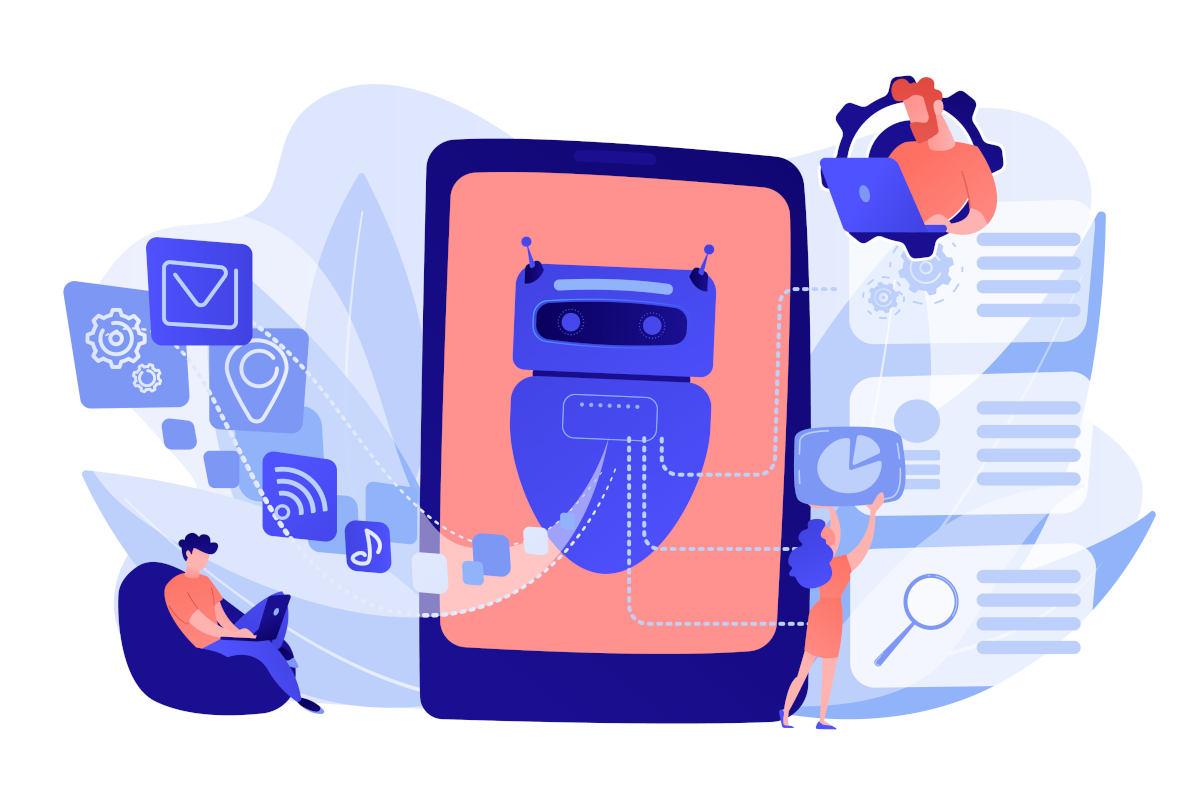Listen to the article
Your audio file will ready in a few seconds...
TL;DR: Integrating a chatbot into a business’ customer service requires making decisions. Those include choices around its brand voice, how humanized the tool will be, or whether images, emojis, and GIFs will be integrated. And then, following up with the right set of technical tools to ensure security, testing, and compliance.
You may be wondering if integrating a chatbot as part of your customer service is the right choice. The option might sound a bit too artificial. You may even wonder if this is the right way to tailor to your client needs, or whether manual, human input would be best. Maybe part of the question has to do with even integrating a chat at all. We put together information over this new article, hoping to clarify any doubts you might have as to whether and how a chatbot can help your business.
Let’s check chatbot use statistics, first.
What common statistics say on chatbot use
We already know exactly what customers are looking for in chatbots thanks to a social media management company called SproutSocial. According to them, the main client needs for the use of chatbots are:
- To get a quick answer to questions
- For a complaint or problem resolution
- To get a more detailed answer to a query
- Finding a human customer service agent
As this company puts it, “chatbots aren’t just convenient for your consumers, they’re also great for your business”. And, if we rely on their data a little further, we should also take into account how “56% of people would rather message than call customer service” and “53% of people are more likely to shop with businesses they can message”. Hold on to that thought about messaging being a key aspect for customer service.
Consider voice commands, naming, and even emojis
At this point, you may think of a voice to a chatbot as one that’s more heavily powered by artificial intelligence (AI). Yet, voice commands are now a big part of user expectations. And chatbots can easily work as assistants that pick up on specific business-related vocabulary to conduct interactions.
On the other hand, there is rarely anything more humanizing than giving beings a name, a principle that also applies to the AI tools we’re currently analyzing. Whether it’s Joe or Miguel, giving chatbots a name can be a part of establishing a closer rapport with customers.
And, ironically, businesses don’t even consider emojis as part of a lively chatbot interaction. However, they’re proven to help move digital conversations forward nowadays. At this stage or our digital communication, images or GIFs could effectively power new conversations with clients – if done right. Analyze this as a separate topic as you look for chatbot integrations.
Ensure risk-free chatbot compliance
End-to-end security is furthermore a must in this development topic; especially when tied to all personal identifiable Information (PII). Take Europe’s General Data Protection Act (GDPR) as an example. Businesses simply need to make sure they comply with all applicable privacy regulations wherever they’re operating. Failure to comply can be quite costly in many senses.
The plus side is that information technology can effectively and easily enhance compliance and regulatory processes in many industries, including every part of financial services. So take regulatory technology (RegTech) into account in your development. Combining RegTech with chatbot implementation should be a breeze with the right tech development partner. Now, for the juice of this piece, let’s get started on how to boost a business with a chatbot.
Bots can be more than just an answering channel
You can use a chatbot channel to give out important side information. Companies can use these mediums to give out perks and benefits they think users might love. Include details on promotions or specific company programs that customers might not yet have known. You can use these means to give out information of value that applies to the user experience. Hours of operation and diverse locations are part of the details that can be easily transmitted via chatbot replies.
The above information can also be optional. An interaction can allow user selection for those pieces of advice or added details that the business is offering – on the side. As a plus to the service, users will be more in control of the information they get as they enter this chatbot relationship.
Being comprehensive about options helps a fulfilled user experience. Think of a greater amount of possible areas for which customers may need answers. Doing so will help better suit their expectations. And reducing the dissatisfaction bar is key here.
Then test, test, and test again!
Since there need to be many different routes a user can take to arrive at their desired information of value, all paths must function properly. Companies with established quality assurance teams and, better yet, quality assurance automation processes, must be able to ensure more than sufficient testing on a delivered product. However, if this tool is being developed in-house, make sure testing is a big part of your chatbot setup. And then ensure this testing is also ongoing.
From fintech to banking, chatbots also help with insurance and payments
Centered on chatbot use in industries such as fintech and banking as much as payments and insurance, these tools can boost a business with leading assistance in services like money transfers, mobile and net banking, bill pay, and more. From financial advice to a better grasp of investment risks, chatbots can cut back on long lines at branches to allow users to take the reins of their financial, insurance, payments, or banking needs from the comfort of their own homes.
Whether it’s clearing an invoice or buying crypto, looking into balances or a reduced recent transaction history to even uploading a document, chatbots are already covering items such as new account creations. Consumers can get insight as to their spending habits for automatically-generated recommendations on potential investments or fund management.
Whether it’s PayPal or Stripe, Amazon payment and Apple Pay, multiple integrations are allowing millennials and similar audiences to take control of their finances in minutes, as opposed to traditional walk-in procedures at bank branches.
When it comes to insurance, chatbots allow quicker assessments of potential solutions, including progressive risk assessment abilities. And, for the payments industry, chatbots can accelerate views of possible loan products, including mortgages. These automated tools can also guide users towards mobile wallets as much as loan applications. Consumers can fill and present these on the spot!
Either of these industries can benefit from an enhanced security of their online platforms with added security alerts, as well. Chatbots can issue flags and engage in fraud prevention on both the customer and the business end. With the stance of such a competitive and fast-paced market as fintech, chatbots are enhancing user experience more and more every day.
More complex functions with machine learning
As we’ve shown above, the most cutting-edge technology at the moment allows for very complex dynamism. And machine learning is a big part of how that happens.
From deep semantic parsing to natural language processing, the latest tech is highly capable. It can convert language to logic form and use computer-to-human interactions to process and analyze large amounts of data. Tech advancements also allow algorithm customization for intent and context to be drawn out of regular conversations.
Tons can be achieved with the right partner and the latest technology at the service of customer service of the highest quality. A driving question here could be: What are your users’ current needs and their biggest pain points? Understanding and mapping those can be a great first step towards an ideal chatbot implementation as it will help direct your decision-making in the process. We wish you the best with that.
Learn more about machine learning.
Was this article insightful? Then don’t forget to look at other blog posts and follow us on LinkedIn, Twitter, Facebook, and Instagram.










